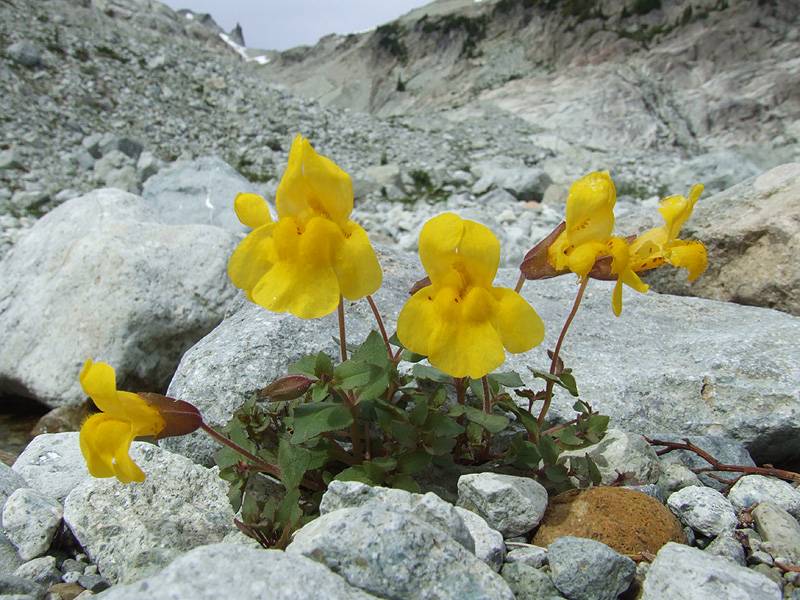Erythranthe tilingii
Erythranthe grandis
large monkey-flower
Leaves opposite, mostly sessile, the blade under 2.5 cm. long, elliptic to ovate, slightly reduced upward, with a few irregular teeth, sub-palmately veined.
Leaves basal and cauline, basal leaves generally not persistent;
petioles 10-80 mm, becoming reduced distally;
blade ovate to broadly elliptic, 25-60 mm long and 20-40 cm broad, palmate or nearly pinnate venation with 5-7 veins, base truncate to nearly cruneate to nearly cordate, margins crenulate to toothed, occasionally sublyrate near base, apex rounded to obtuse, surfaces of distalmost leaves hairy as stems.
Flowers few, solitary in the leaf axils, on long pedicels;
calyx 5-toothed, irregular, the upper tooth much the largest, the 2 lower ones tending to fold upward;
corolla large for the size of the plant, 2-4 cm. long, strongly bilabiate, with flaring throat, yellow with maroon dots or splotches on the pubescent lower lip;
stamens 4.
Inflorescence racemose, bracteate, flowers 8-26; fruiting pedicels 10-35 mm, hairy as stems;
calyx straight-erect or nodding at 45-100 degrees, ovate to bell-shaped, inflated, compressed along sagittal plane, 15-22 mm, hairy as stems, throat closing;
corollas yellow with red spots inside, symmetric bilaterally, bilabiate;
tube-throat widely funnel-shaped, 16-24 mm, protruding 10-15 mm beyond calyx margin, limb widely expanded;
styles hirtellous;
anthers not protruding, glabrous.
Capsule.
Capsules 8-12 mm, included.
Erythranthe tilingii
Erythranthe grandis
- Local floras:
BC,
CA,
OR
- Local Web sites:
CalFlora,
CalPhotos,
Flora NW,
PNW Herbaria
WildflowerSearch
iNaturalist (observations)
- LBJ Wildflower Center
- SEINet
- Plants of the World Online
- Encyclopedia of Life
- Wikipedia
- Google Image Search
- Local floras:
CA,
OR,
WA
- Local Web sites:
CalFlora,
CalPhotos,
Flora NW,
PNW Herbaria
WildflowerSearch
iNaturalist (observations)
- LBJ Wildflower Center
- SEINet
- Plants of the World Online
- Encyclopedia of Life
- Wikipedia
- Google Image Search



